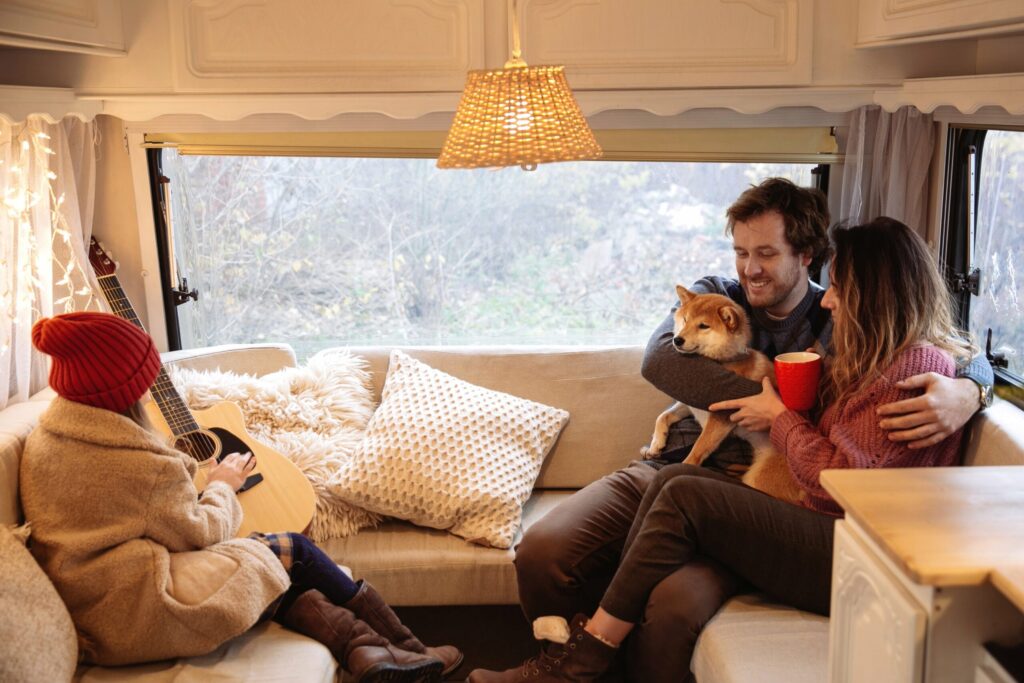
, Posted on Wednesday January 31, 2024
Preparing Your Static Caravan for the Winter
Table of contents
4 minutes read time
If you have read it or heard it said but are wondering just exactly what the term ‘winterisation’ means, don’t panic. It’s nothing sinister. Quite the opposite, in fact. It’s the process of ensuring that your static caravan is prepared for the colder season. In other words, ‘winterising’ your caravan means doing all of the little routine maintenance tasks required to shore up against the winter and making sure your static stays in the best possible condition throughout. How do you do this, though? Don’t panic about that, either – in this edition of our blog we’ll cover off all of the steps you need to take…
Clean and Tidy
Cleaning the exterior of your static caravan in the same way that you would clean the exterior of your car or leisure vehicle (ie. with soapy water and elbow grease, and then rinsing off) is very important. Any deposits can ‘set in’ and harden up (things like generally occurring dirt and bird poo, etc). These can cause stains and affect the paintwork, as well as being more difficult to deal with if left over the winter.
Cleaning the interior of your static caravan will also reduce the risk of condensation and, therefore, mould growth. Ensuring that the humidity level inside your static is low will help with ensuring internal components are kept free from water-related problems. Wipe down all walls and fixed interior surfaces (window sills etc). Cleaning your static caravan from top to bottom should also include tasks such as emptying the fridge / freezer and food cupboards and cleaning thoroughly. All food should be removed from the static, and all doors should be left open or propped ajar so that air can circulate.
Cleaning the exterior of your static caravan in the same way that you would clean the exterior of your car or leisure vehicle (ie. with soapy water and elbow grease, and then rinsing off) is very important. Any deposits can ‘set in’ and harden up (things like generally occurring dirt and bird poo, etc). These can cause stains and affect the paintwork, as well as being more difficult to deal with if left over the winter.
Cleaning the interior of your static caravan will also reduce the risk of condensation and, therefore, mould growth. Ensuring that the humidity level inside your static is low will help with ensuring internal components are kept free from water-related problems. Wipe down all walls and fixed interior surfaces (window sills etc). Cleaning your static caravan from top to bottom should also include tasks such as emptying the fridge / freezer and food cupboards and cleaning thoroughly. All food should be removed from the static, and all doors should be left open or propped ajar so that air can circulate.
Drain Down the Caravan
Draining down your static caravan is a truly crucial part of winterisation. Draining down means, essentially, making sure that all water is completely flushed out of the caravan’s systems and pipework. Disconnect the stop clock (typically located underneath the caravan) and open all of your static caravan’s drain valves and remove plugs (including any external ones). Remove filters and run the static’s on-board pump (if it has one) to clear water through the system. Drain portable water containers. Turn on the taps and shower until they run dry, flush the toilet until the cistern is empty. Pour anti-freeze into the sink, toilet bowl and cistern, as well as the shower plughole. This will assist in preventing cracks happening due to freezing damp. Many static caravan parks offer a drain down service so you don’t necessarily have to go through all of these steps yourself.
Drains and Gutters
Ensure that the drains and gutters of your static caravan are free from debris which might have built up. Fallen leaves can fill up your gutter and block their drainage, the water unable to flow properly. These leaves can also rot, leaving an awful residue.
Utilities
You should make sure that your gas and electricity at your static caravan are disconnected or switched off at the mains. Close off the valves on the cylinders or disconnect the regulators and make sure to fit secure caps over the ends of any open pipework. If your gas supply is through portable canisters these should be stored in a well-ventilated, dry and secure location – if possible, in the open air rather than in a shed or garage. They need to be stored away from ignitable, corrosive, toxic or oxidant materials.
Remove items or move items
You should remove non-fixed items and store them back at your bricks and mortar house or put them in your garage or other storage area. If you have important electricals such as a TV, blu-ray player or a hi-fi system in your static, damp can cause issues on the circuit-boards and may even lead to permanent damage. If the caravan is going to be completely out of use for a time, then you should also remove items such as bedding sheets and pillows. Soft furnishings in the static caravan (sofa cushions etc) can be stored and store away from the walls and doors. In the bedroom, you should also up-end the mattress and move it away from the walls, windows and doors.
Making a checklist of things to do during the winterisation of your static caravan can be really helpful, as you can keep a running tally on tasks completed against tasks to do. At Don Amott Parks we have some fantastic luxury static caravans for sale and we provide some of the finest holiday parks in Lincolnshire. Whether you buy your static from brand new or have a used caravan, winterising thoroughly will provide you with peace of mind as well as, come Spring, a home from home in a homely condition!



